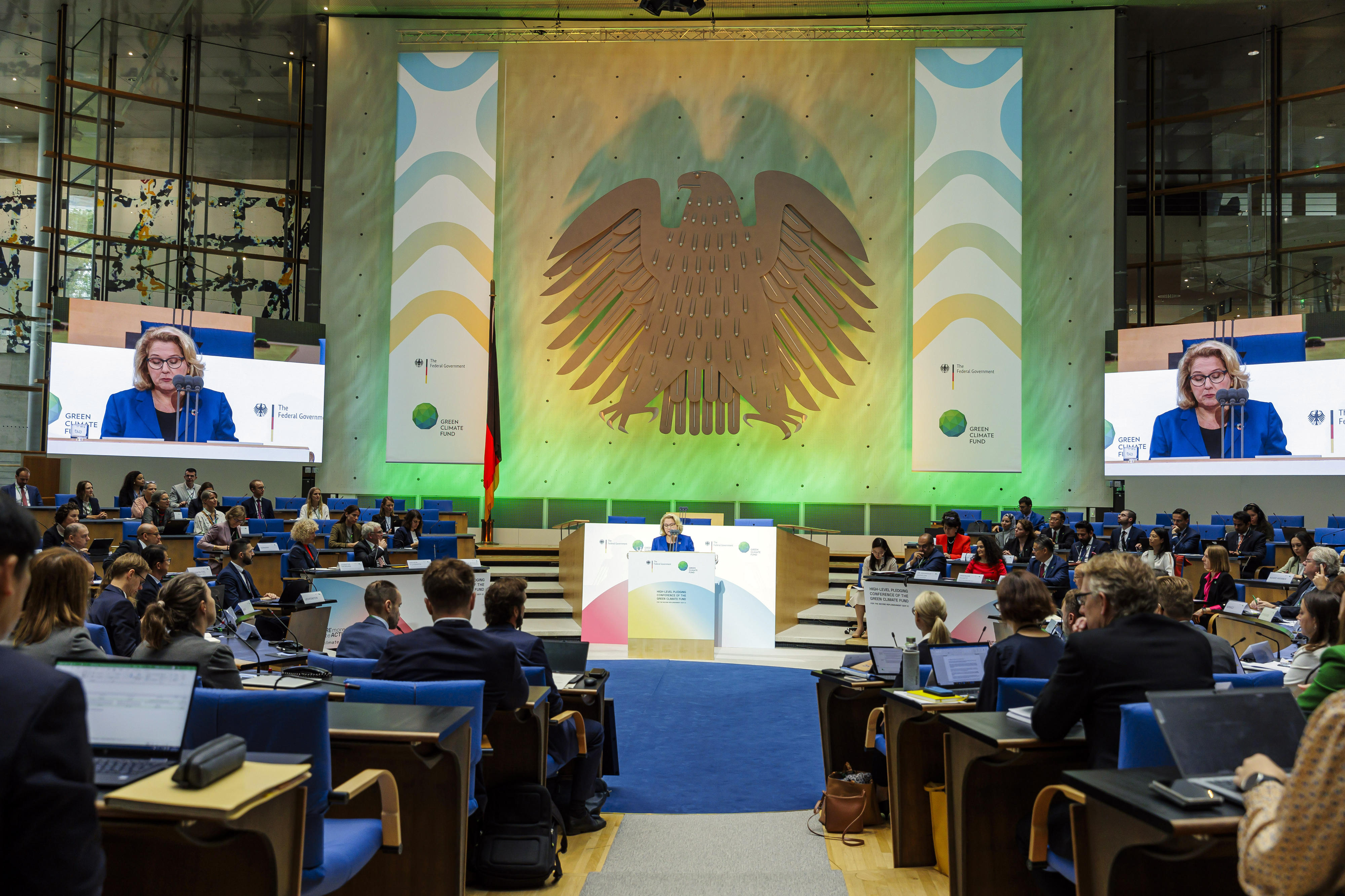Climate finance Green Climate Fund
Some 50 countries paid 19 billion US dollars into the GCF in its first two replenishment rounds in 2014 and 2019. Developing countries can use these resources to finance mitigation projects, adapt to climate change and build a low-carbon economy.
Up to now, more than 250 projects have been approved, with a total volume of 13.9 billion US dollars (53 billion including co-financing) – going in roughly equal measure to mitigation and adaptation activities.
GCF projects will help to reduce or avoid 2.9 billion tonnes CO₂-equivalent emissions. Furthermore, GCF support is expected to boost the resilience of about one billion people to the adverse effects of climate change. To date, the GCF portfolio has saved 63 million tonnes of carbon emissions and directly or indirectly benefited 57 million people.
The GCF's current Strategic Plan (2024–2027) focuses on support for readiness activities and improved access for national implementing organisations. It seeks to promote the transition to low-emission, climate-resilient development pathways; to support particularly vulnerable countries as they address their adaptation and resilience needs; and to foster private sector involvement through innovation and through greening financial systems.
The GCF is also working continuously on innovative financing instruments such as debt-for-climate swaps and local currency lending. Such lending can mitigate risks for countries with less developed capital markets and improve the sustainability of climate action.
The BMZ and the Federal Foreign Office share responsibility for the GCF within the German government. For the GCF's initial capitalisation, Germany made a contribution of 750 million euros. In the first replenishment round, it doubled this amount, providing 1.5 billion euros for 2020 to 2023. It further increased its contribution in the second replenishment, pledging two billion euros for 2024 to 2027. Germany is one of the GCF's top donors.
Germany's contribution to the GCF comes entirely from the BMZ's budget. On 5 October 2023, Germany hosted a high-level international replenishment conference in Bonn chaired by Development Minister Svenja Schulze. The conference was intended to generate attention for international climate change mitigation and adaptation and mobilise commitments for the Green Climate Fund for the period 2024 to 2027. The replenishment conference was a big success. Pledges for the next four years made by 33 countries amounted to a record total of 12.8 billion US dollars.
As at: 19/06/2024


